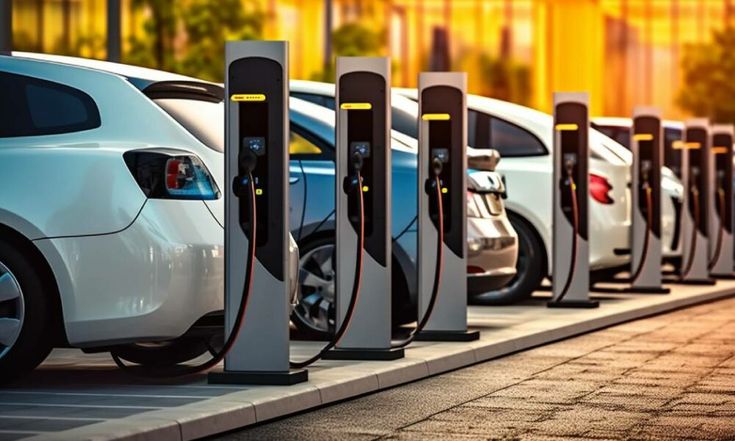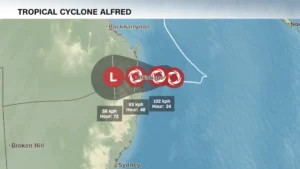As electric cars (EVs) become increasingly popular, the expansion of charging infrastructure is crucial to support their widespread adoption. The transition to electric vehicles is a key component in the global effort to reduce greenhouse gas emissions, combat climate change, and achieve sustainable transportation. However, the success of this transition depends not only on advancements in EV technology but also on the development of a robust and accessible charging network.
This article explores the current state of charging infrastructure, the challenges associated with its expansion, and the strategies required to overcome these hurdles. We will also delve into how these factors impact the adoption of electric cars and provide insights into the ongoing efforts to enhance the charging experience for EV users.
The Importance of Charging Infrastructure
Charging infrastructure is essential for the growth of the electric vehicle market. Without a comprehensive network of charging stations, potential EV buyers may be deterred by concerns about range anxiety and the availability of charging points. Effective charging infrastructure can alleviate these concerns, making electric cars a more viable option for consumers and businesses alike.
Key Components of Charging Infrastructure
- Charging Stations: The core of charging infrastructure, these stations come in various types and speeds, including Level 1, Level 2, and DC fast chargers. Each type serves different needs, from home charging to rapid public charging.
- Charging Networks: These are systems of interconnected charging stations that allow users to locate, access, and pay for charging services. Many networks offer mobile apps and membership programs to facilitate a seamless charging experience.
- Charging Technology: Advances in technology are crucial for enhancing charging speed, efficiency, and user experience. Innovations such as wireless charging and ultra-fast charging are transforming the way EVs are charged.
- Smart Grid Integration: The integration of charging infrastructure with the smart grid allows for better management of energy consumption, load balancing, and optimization of renewable energy sources.
Current State of Charging Infrastructure
The charging infrastructure landscape has evolved significantly over the past decade. Governments, private companies, and utility providers have made substantial investments to expand and improve charging networks. However, despite these advancements, there are still several challenges to overcome.
Expansion of Charging Networks
- Increased Charging Stations: According to recent reports, the number of public charging stations has been steadily increasing. In many countries, including the United States, Europe, and China, there are thousands of charging points available to EV owners. These stations range from slow chargers at parking lots and residential areas to high-speed chargers on highways.
- Government Initiatives: Governments worldwide are implementing policies and incentives to support the growth of charging infrastructure. For example, in the European Union, the Alternative Fuels Infrastructure Directive mandates the installation of charging points in member states. Similarly, the U.S. government has announced significant funding for the development of a nationwide network of fast chargers.
- Private Sector Investment: Major automotive manufacturers and technology companies are investing heavily in charging infrastructure. Companies like Tesla, ChargePoint, and Ionity are building and expanding their networks to cater to the growing number of EVs on the road.
Challenges to Widespread Adoption
Despite progress, several challenges hinder the rapid expansion of charging infrastructure and the widespread adoption of electric cars.
- Range Anxiety: One of the primary concerns for potential EV buyers is range anxiety, or the fear of running out of battery power before reaching a charging station. Although the range of electric cars has improved, consumers still worry about the availability of charging points, especially in rural or underserved areas.
- Charging Speed: While DC fast chargers can provide a significant boost in charging speed, the majority of charging stations still use Level 2 chargers, which take longer to charge EVs. The development and deployment of ultra-fast chargers are crucial to reducing charging times and improving the overall user experience.
- Infrastructure Costs: The installation and maintenance of charging stations involve substantial costs. For many private companies and local governments, the financial burden can be a significant barrier. Public-private partnerships and government incentives are essential to addressing these cost challenges.
- Grid Capacity and Reliability: As the number of EVs increases, so does the demand for electricity. Integrating charging infrastructure with the smart grid can help manage this increased load, but it also requires substantial investment in grid modernization and energy management systems.
- Standardization and Compatibility: The lack of standardization in charging connectors and payment systems can create confusion and inconvenience for users. Efforts to standardize charging technologies and create interoperable networks are necessary to ensure a seamless experience for EV owners.
- Equitable Access: Ensuring that charging infrastructure is available to all users, including those in low-income or underserved communities, is crucial for promoting the widespread adoption of electric cars. Strategies to address this issue include deploying charging stations in public spaces and offering incentives for the installation of home chargers in low-income areas.
Strategies for Enhancing Charging Infrastructure
To address the challenges and support the growth of electric cars, several strategies can be implemented:
1. Expanding Charging Networks
- Urban and Rural Coverage: Expanding charging networks to cover both urban and rural areas is essential for reducing range anxiety and ensuring that all EV owners have access to charging points. Strategic placement of charging stations along major highways and in underserved regions can improve coverage.
- Partnerships and Collaborations: Collaborations between governments, private companies, and utility providers can accelerate the deployment of charging infrastructure. Public-private partnerships can help share the financial burden and leverage expertise from various sectors.
2. Investing in Charging Technology
- Ultra-Fast Chargers: Increasing the number of ultra-fast chargers can significantly reduce charging times and improve the convenience of EV ownership. Investment in research and development of next-generation charging technologies is crucial for staying ahead of demand.
- Wireless Charging: The development of wireless or inductive charging technology can eliminate the need for physical connectors and provide a more convenient charging solution. While still in the early stages, this technology has the potential to revolutionize the charging experience.
3. Improving Grid Integration
- Smart Grid Solutions: Implementing smart grid technologies can help manage the increased demand for electricity from EVs. Solutions such as demand response programs and vehicle-to-grid (V2G) technology can optimize energy usage and support grid stability.
- Renewable Energy Integration: Integrating renewable energy sources, such as solar and wind power, with charging infrastructure can reduce the carbon footprint of electric cars and support sustainability goals.
4. Standardizing and Simplifying
- Universal Connectors: Standardizing charging connectors and protocols can simplify the charging process for users and reduce confusion. Efforts to create universal connectors and interoperable networks are essential for improving the user experience.
- Unified Payment Systems: Implementing a unified payment system that allows users to pay for charging services using a single account or app can enhance convenience and streamline the charging process.
5. Promoting Equitable Access
- Incentives for Low-Income Areas: Offering incentives and subsidies for the installation of charging stations in low-income or underserved communities can help ensure that all users have access to charging infrastructure.
- Public Charging Stations: Deploying charging stations in public spaces, such as shopping centers, parking garages, and transit hubs, can increase accessibility and encourage the adoption of electric cars.
Conclusion
The expansion of charging infrastructure is a critical factor in the widespread adoption of electric cars. While significant progress has been made in developing and deploying charging networks, several challenges remain, including range anxiety, charging speed, infrastructure costs, and equitable access. Addressing these challenges requires a multi-faceted approach, involving investments in technology, strategic planning, and collaborative efforts among stakeholders.
As the global transition to electric vehicles continues, the development of a robust and accessible charging infrastructure will play a pivotal role in shaping the future of sustainable transportation. By overcoming existing barriers and implementing effective strategies, we can support the growth of electric cars and contribute to a cleaner, greener future.







